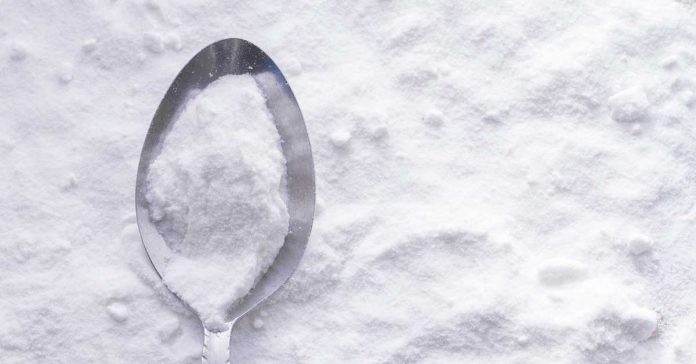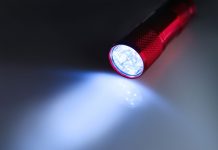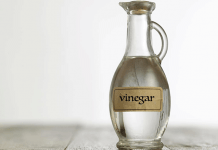Baking soda (sodium bicarbonate) is a natural leavening agent (but not just) used in baking. This basically means that when mixed and baked, it causes boiled goods to rise by creating air bubbles.
There are a few alternatives for baking soda which can have a better and more natural effect. Any use of baking soda is simply a baking soda substitute. But we are going to get to that in a moment.
Ancient Egyptians were the first people known to use a rudimentary version of baking soda called Natron. Since it’s discovery the name may have changed but its uses have not. It has been used for thousands of years as a cleaning product for both home and body.
Baking Soda Substitute 1
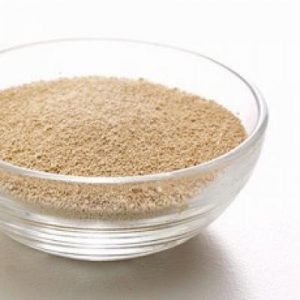

Yeast is my favorite baking soda substitute because it’s not a chemical compound. It is 100 % natural and contains 27% Fiber, 0% Cholesterol, 50% Protein and it is rich in Vitamin C, Calcium and Iron. It helps boiled goods to rise just like baking soda. This natural baking soda replaces it which most doctors and nutritionists often recommend. I also like to use yeast better, because it doesn’t add soda and powder to the bitter flavor baking. And most bread makers and chefs love it pretty much too.
Charles Rhode from Sheboygan, Wisconsin: “I run my automatic bread maker at least twice a week, so I go through a lot of yeast. I measure out my own dry bread mix according to a couple of recipes and store it in the freezer. I mix five batches at a time. To start the machine on any given day, I just reach for a single-batch container.”
Related: These 6 Backyard Plants Can Turn Into Bread
Baking Soda Substitute 2
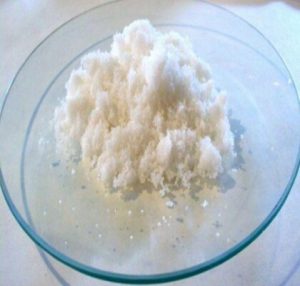

Potassium Bicarbonate it’s another excellent baking soda substitute. This is often recommended for people with problems with sodium intake, or people with circulatory or heart problems.
You should substitute the amount of baking soda with the same amount of potassium bicarbonate, if you were baking cookies. If your recipe requires one of the acidic liquids (sour cream, vinegar, yogurt, buttermilk, molasses, and citrus fruits and juices), you may want to replace those liquids with plain whole milk or water. Otherwise, this replacement baking soda won’t work properly.
Baking Soda Substitute 3
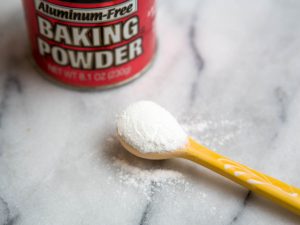

Baking Powder is referred by many as a baking soda substitute. But it is not! It is doing the same thing but it’s not a substitute. Baking powder basically bakes soda (sodium bicarbonate) that is already mixed with an acid (usually tartar cream). Baking powder is also used alone in baked goods which do not already contain an acid. It acts in the same way it does baking soda, producing air bubbles that cause the batter to rise.
If you don’t have baking soda you can still use baking powder instead. But bear in mind that baking soda is much more effective so you need to use 3 times more baking powder.
You can also DIY. For one teaspoon of baking powder, combine 1/2 teaspoon cream of tartar, 1/4 teaspoon baking soda, and 1/4 teaspoon cornstarch.
Related: How to Make 10 Types of Survival Bread
Yummy Healthy Recipes
1. Orange-Applesauce Date Cake
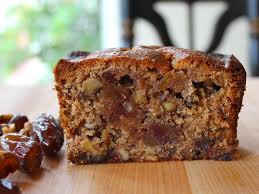

(a divine recipe for people with diabetes or vegetarian) – 9 servings. This easy lunchbox cake is moist and delicious—and even better the next day. The applesauce replaces both eggs and fat.
- 1 cup smooth unsweetened applesauce
- 1 teaspoon baking soda or a baking soda substitute
- 1/8 teaspoon ground allspice
- 1/8 teaspoon ground nutmeg
- 1/4 teaspoon salt
- 1/2 teaspoon ground cinnamon
- 1/4 cup oat flour (oatmeal ground in a dry blender or electric coffee mill) or barley flour
- 1/2 cup brown sugar
- 1 cup whole-wheat pastry flour (not regular whole-wheat flour)
- 1 tablespoon grated orange peel
- 2 tablespoons water
- 1 tablespoon lemon juice
- 1 cup chopped pitted dates
Preheat oven to 350°F. Place applesauce, lemon juice, and water in a small saucepan over medium heat and warm slowly. Add orange peel. Mix pastry flour, brown sugar, oat or barley flour, cinnamon, salt, nutmeg, and allspice in a medium bowl. Stir baking soda into applesauce mixture (it will foam up). Pour immediately into flour mixture and stir briefly but thoroughly.
Add dates and mix briefly. Scoop the batter into a non-stick 9″×9″ cake pan, smooth the top, and bake for 10 minutes. Reduce heat to 325°F and bake for 25 to 30 minutes or until it tests done with a cake tester. Transfer to a rack and cool completely. Make 2 evenly spaced cuts through the cake vertically, then horizontally, to make 9 squares. Per serving (1/9 of cake)
• Calories: 155• Saturated Fat: 0.1 g • Cholesterol: 0 mg • Protein: 2.8 g • Carbohydrates: 37.7 g • Sugar: 22.7 g • Fiber: 4 g • Sodium: 211 mg • Calcium: 25 mg • Iron: 1.1 mg • Vitamin C: 1.8 mg • Beta Carotene: 6 mcg • Vitamin E: 0.2 mg
2. Gluten-Free Buttermilk Pancakes
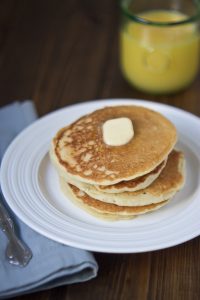

- 4-3/4 oz. (1 cup) brown rice flour
- 1-1/2 oz. (1/3 cup) almond meal
- 1 Tbs. cornstarch
- 1 tsp. baking soda or baking soda substitute
- 1/2 tsp. table salt
- 1 cup low-fat buttermilk
- 2 large eggs
- 1 Tbs. canola oil
- 1 Tbs. honey
- 1 tsp. pure vanilla extract
- 1/2 lemon squished
- Pure maple syrup, for serving
Heat the oven to 200 °F. In a large bowl, whisk the brown rice flour, almond meal, cornstarch, baking powder, and salt. In a medium bowl, whisk the buttermilk, eggs, canola oil, honey, and vanilla. Stir the wet ingredients into the dry ingredients until combined.
Coat a large nonstick griddle or skillet with cooking spray and heat over medium-low heat until hot. Working in batches, ladle a scant 1/4 cup of the batter per pancake onto the griddle or skillet, leaving a few inches of space between each to allow for spreading. Cook until golden-brown on the bottom and beginning to dry around the edges, 1 to 2 minutes. Flip and cook the pancakes until the other side is golden-brown, 1 to 2 minutes more.
Transfer to a large baking sheet and keep warm in the oven. Spray the griddle with a fresh coating of oil between each batch. Serve the pancakes with the maple syrup.
• Calories: 100 • Saturated Fat: 5 g • Cholesterol: 30 mg • Protein: 3 g • Carbohydrates: 12 g • Fiber: 1 g • Sodium: 200 mg



